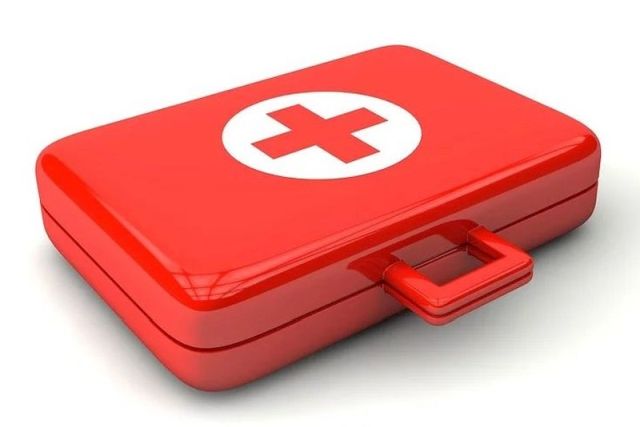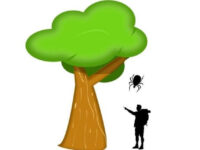Ticks are just about everywhere where there is vegetation. They sit and wait on plants, branches, leaves, and blades of grass. When a potential host passes by near enough, the ticks are stripped off and cling to them. Whether you are hiking, camping, or if you are just outdoors walking the dog, it is only a matter of time until you come into contact with a tick. Ticks can transmit pathogens, it is crucial to search your body regularly and if a tick is found to remove it as soon as possible.
How to avoid getting ticks while hiking?
The usual precautions to avoid getting ticks such as wearing long pants and tucking them into your socks, avoiding contaminated areas, regular body checks for ticks, and using effective tick repellents help to reduce the risk of getting ticks, but there is always a risk that a tick bites you.
Tick removal kit – fits in every backpack
If you get bitten, you need to remove the tick as soon as possible. A tick-removal kit comes in very handy, it has everything you need to deal with a tick bite. It is small and compact and fits easily in your backpack or jacket pocket.
No products found.
What is a Tick Removal Kit?
A tick removal kit is a small first-aid kit that contains everything you need to get rid of the tick. A special tick tweezer, wound cleaning wipes, and band-aids, and an illustrated guide. All this is in a practical small box or pouch that takes up little space and should be a standard that belongs to your outdoor equipment.
What should be included in a tick-removal kit?
- One or more tools and for tick removal.
- Cleaning wipes for cleaning and disinfecting the wound.
- Bandages to dress the wound and keep it clean to prevent infection.
A good set should include various sized removal tools. It should include a special, flat curved tweezer that lets you grab ticks properly. For nymphs, a very fine tool is required so that the nymph is not squeezed when it is removed.
The tick-removal kit should also usually cleaning wipes. These are used to clean and disinfect the bite site after the tick has been removed. As an alternative, use other wound disinfectants to clean the wound.
A selection of wound bandages for covering the wound should be included. Covering the wound prevents dirt from getting into it. This will reduce the risk of possible inflammation of the bite site and further complications. In most cases this is sufficient and the small wound heals independently and without complications. Regular wound control should still not be neglected. However, if pain occurs or the wound becomes infected, it is best to see a doctor.
A selection of wound plasters to cover the wound should be included. Covering the wound will ensure that no dirt gets into it. This reduces the risk of possible inflammation of the bite site and other complications. In most cases this is sufficient and the small wound heals without complications. Regular wound control should still not be neglected. However, if pain occurs or the wound becomes infected, it is best to see a doctor.
How to correctly remove a tick
If a tick bites you, it must be removed as quickly as possible. The longer the tick remains in the wound, the greater the risk of infection. Don’t panic, not every tick necessary transmits pathogens, but you still need to get rid of it right away to reduce the risk.
To remove a tick properly, it is best to grasp it with the special curved tweezers as close to the skin as possible and pull evenly up until the tick comes out of the wound.
Avoid crushing or squeezing the tick body. This favors the transmission of infectious saliva or the intestinal contents of the tick.
It is important to try to remove all parts of the ticks. But quite often part of the ticks piercing tools remains in the wound. While this is not particularly dangerous, it is possible that the affected area becomes inflamed. Monitor the wound.
If you don’t have a suitable tool at hand, use your own fingernails carefully. Even with the cutting edge of a knife, you can try to remove the tick if no other tools are available. To do this, place the cutting edge at an acute angle next to the tick and while applying pressure against the skin push the knife edge against the tick to push it out. However, you have to be extremely careful not to cut the tick, meaning not to off the radula (the ticks bite tool), otherwise, they will remain in the wound.
Do not try to remove the tick with heat, fire, oil, glue or fuel or similar folk remedies. These are bad methods that only make the tick feel stressed. If the tick is stressed or in agony then vomiting can occur, causing the food tract and intestinal contents of the tick to be transferred into the wound.
Learn More:
Removing a Tick: https://globallymealliance.org


